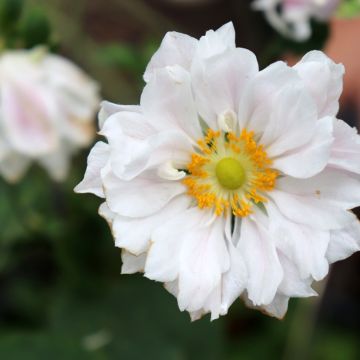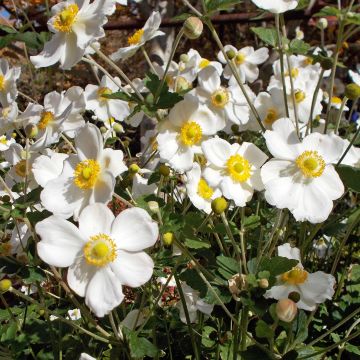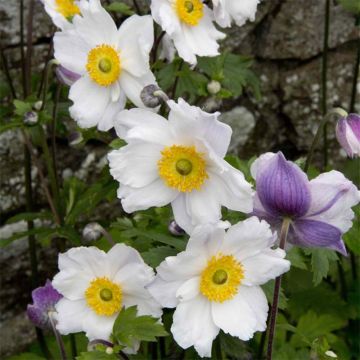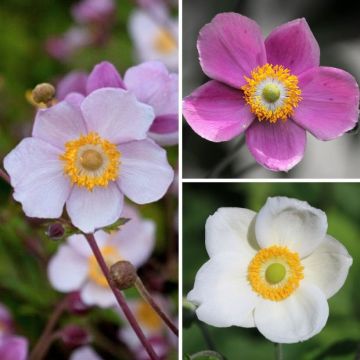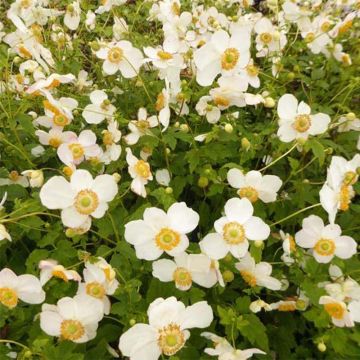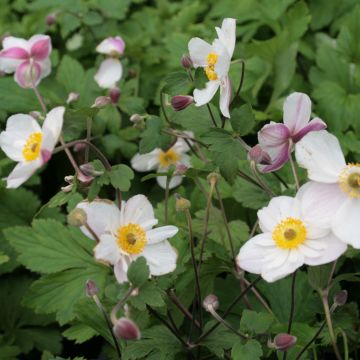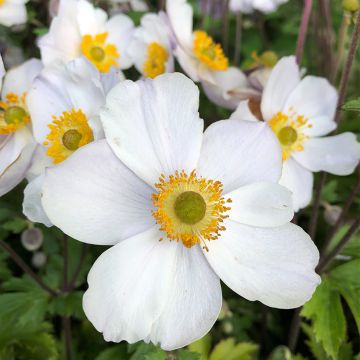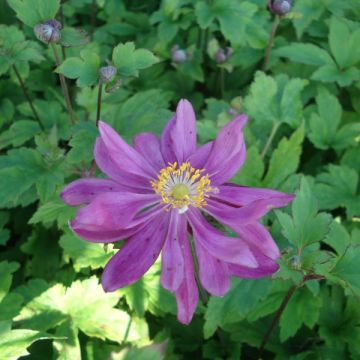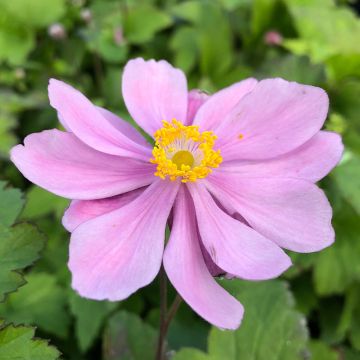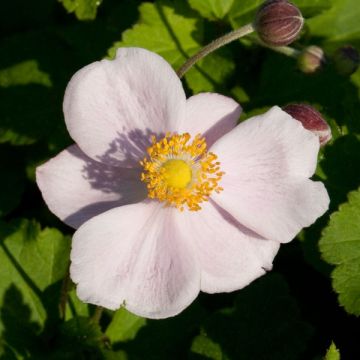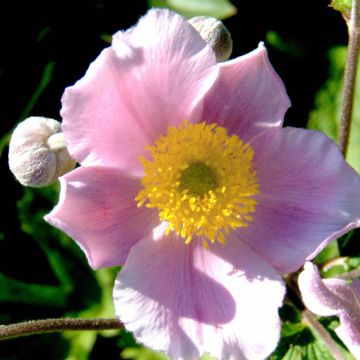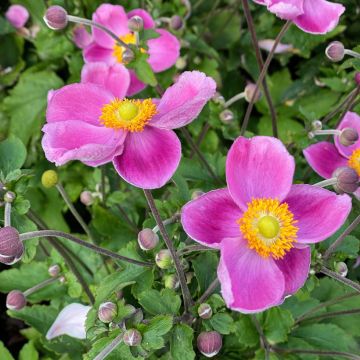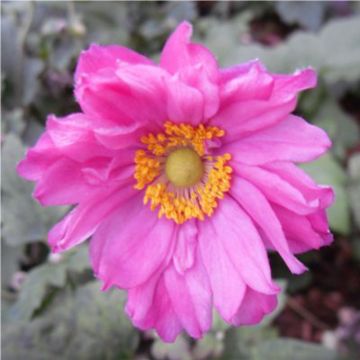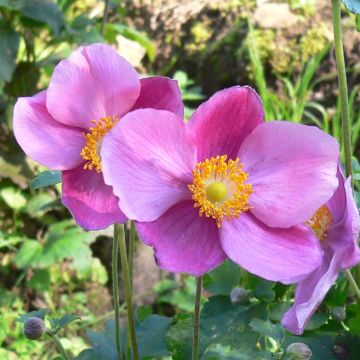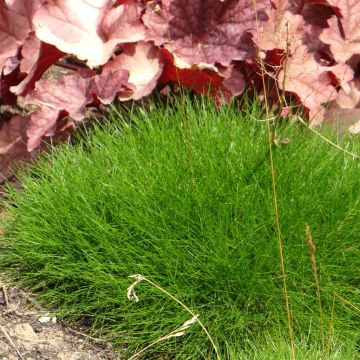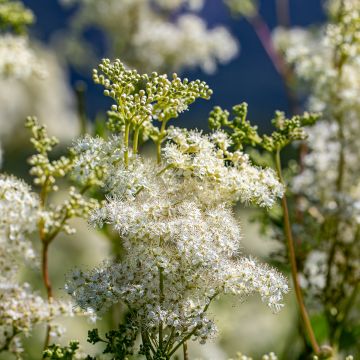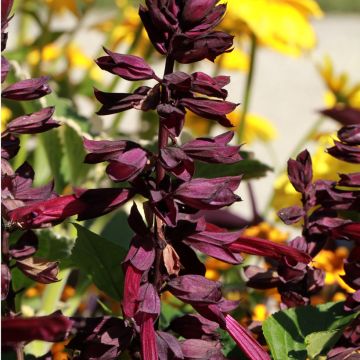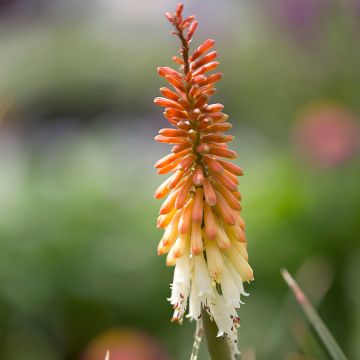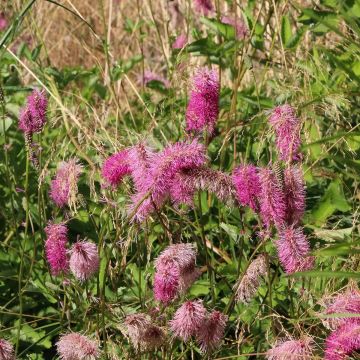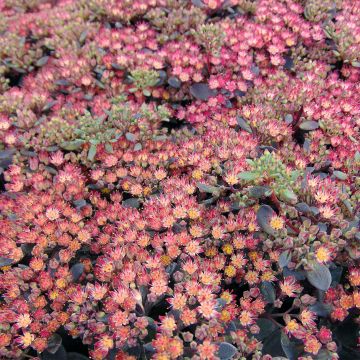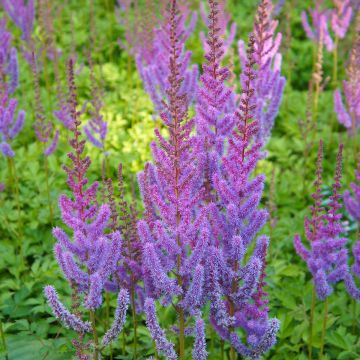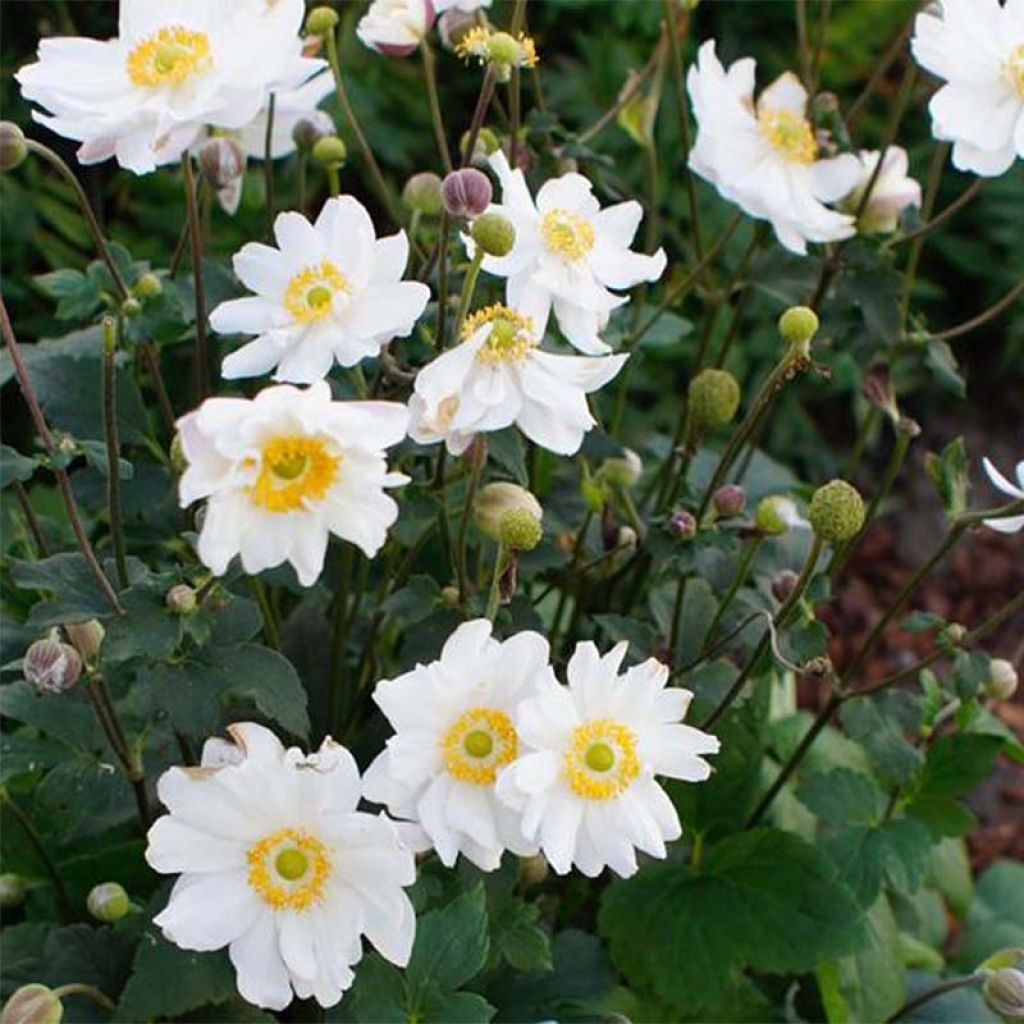

Anemone hybrida Snow Angels
Anemone hybrida Snow Angels
Anemone hupehensis var.japonica Snow Angels ®
Japanese anemone, Thimbleweed, Windflower
Why not try an alternative variety in stock?
View all →This plant carries a 12 months recovery warranty
More information
We guarantee the quality of our plants for a full growing cycle, and will replace at our expense any plant that fails to recover under normal climatic and planting conditions.
From €7.90 for pickup delivery and €6.90 for home delivery
Express home delivery from €8.90.
From €7.90 for pickup delivery and €6.90 for home delivery
Express home delivery from €8.90.
Does this plant fit my garden?
Set up your Plantfit profile →
Description
The Anemone 'Snow Angels' is a new variety of Japanese anemone, absolutely delightful, both floriferous and of modest size, well suited to small spaces. Its semi-double flowers with slightly incised petals open abundantly, revealing a pretty yellow centre, from the month of August. The charm of this perennial cannot be ignored: it enlivens borders and flower beds until autumn like few plants can, even in shade or woodland areas.
The hybrid Japanese anemone 'Snow Angels' is a herbaceous perennial belonging to the Ranunculaceae family. This very recent selection is derived, among others, from Anemone hupehensis, native to central and western China. This compact variety will reach approximately 50 cm (20in) in height when in bloom depending on the fertility of the soil it grows in, with a diameter of 45 cm. Like other Japanese Anemones, it is a perennial plant with fibrous 'tubers' that form large, vigorous, and rounded clumps. The foliage is deciduous to semi-evergreen in winter depending on the climate, highly incised, dark green, strongly veined on the underside, and hairy. The flowering period extends from August to October. The numerous semi-double flowers are borne on sturdy, slender, and erect stems, tinged with purple-violet. They first appear as delightful, oval and fluffy, pale brown-pink buds, then open into wide, shallow cups, composed of a double row of broad, incised petals. Each flower opens to reveal a large crown of yellow stamens. Japanese anemones can live for decades in the same location.
Japanese anemones are among the most beautiful flowers of autumn. Light and graceful, they sway gently in the wind, indifferent to the first frost. They decorate the garden or large pots on the terrace from late summer until the first frost. Perfect in the back of a border for larger varieties, they blend their elegant blooms with the grace of Aster cordifolius, and the nostalgic charm of perennial chrysanthemums. The 'Snow Angels' variety, with its compact growth, is perfect in the foreground of borders, paired with small ferns, or in front of a hedge of hydrangeas and spindles, for example. The finely incised foliage of anemones adds a beautiful dark green touch to flower bouquets. Sometimes invasive if it finds favourable conditions, it easily self-seeds, although not always true to type. It is quite easy to control its growth.
This genus is composed of several dozen perennial or bulbous species with very different needs and behaviours. Cultivars derived from A. h. var. japonica have many more petals than the type.
Anemone hybrida Snow Angels in pictures
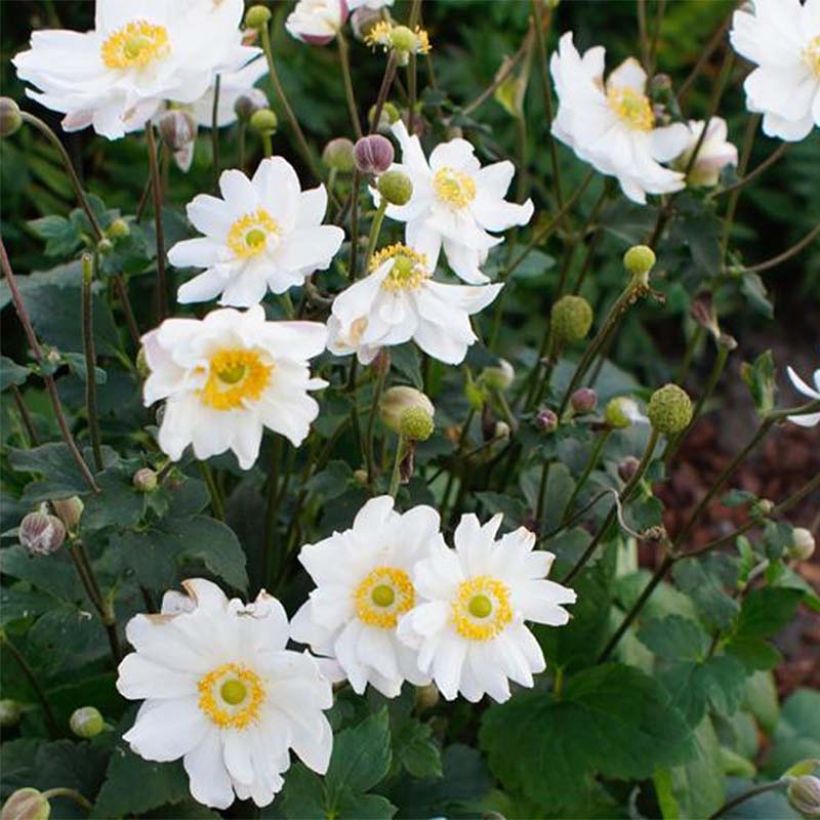

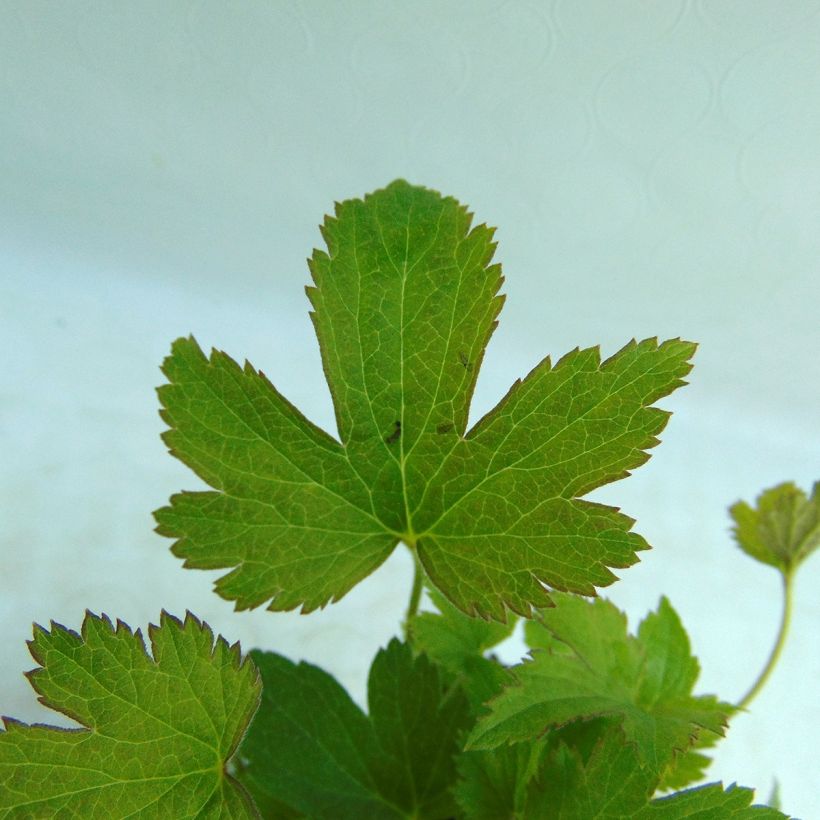

Flowering
Foliage
Plant habit
Botanical data
Anemone
hupehensis var.japonica
Snow Angels ®
Ranunculaceae
Japanese anemone, Thimbleweed, Windflower
Cultivar or hybrid
Other Japanese Anemones
Planting and care
Japanese anemones grow in partial shade, in a moist, humus-rich, well-drained soil with a loose texture and without too much limestone, where they slowly spread with the help of their underground rootstocks. Plant it in a sheltered spot, away from strong winds, in spring or autumn, spacing them 30 cm (12in) apart. Once the young plants are established, they should not be disturbed. The flowering becomes increasingly abundant as the years go by. In late autumn, cut the flower stems to ground level. Every 2 or 3 years, apply well-rotted compost at the base to enrich the soil, as they are quite demanding.
Planting period
Intended location
Care
Summer flowering perennials
Haven't found what you were looking for?
Hardiness is the lowest winter temperature a plant can endure without suffering serious damage or even dying. However, hardiness is affected by location (a sheltered area, such as a patio), protection (winter cover) and soil type (hardiness is improved by well-drained soil).

Photo Sharing Terms & Conditions
In order to encourage gardeners to interact and share their experiences, Promesse de fleurs offers various media enabling content to be uploaded onto its Site - in particular via the ‘Photo sharing’ module.
The User agrees to refrain from:
- Posting any content that is illegal, prejudicial, insulting, racist, inciteful to hatred, revisionist, contrary to public decency, that infringes on privacy or on the privacy rights of third parties, in particular the publicity rights of persons and goods, intellectual property rights, or the right to privacy.
- Submitting content on behalf of a third party;
- Impersonate the identity of a third party and/or publish any personal information about a third party;
In general, the User undertakes to refrain from any unethical behaviour.
All Content (in particular text, comments, files, images, photos, videos, creative works, etc.), which may be subject to property or intellectual property rights, image or other private rights, shall remain the property of the User, subject to the limited rights granted by the terms of the licence granted by Promesse de fleurs as stated below. Users are at liberty to publish or not to publish such Content on the Site, notably via the ‘Photo Sharing’ facility, and accept that this Content shall be made public and freely accessible, notably on the Internet.
Users further acknowledge, undertake to have ,and guarantee that they hold all necessary rights and permissions to publish such material on the Site, in particular with regard to the legislation in force pertaining to any privacy, property, intellectual property, image, or contractual rights, or rights of any other nature. By publishing such Content on the Site, Users acknowledge accepting full liability as publishers of the Content within the meaning of the law, and grant Promesse de fleurs, free of charge, an inclusive, worldwide licence for the said Content for the entire duration of its publication, including all reproduction, representation, up/downloading, displaying, performing, transmission, and storage rights.
Users also grant permission for their name to be linked to the Content and accept that this link may not always be made available.
By engaging in posting material, Users consent to their Content becoming automatically accessible on the Internet, in particular on other sites and/or blogs and/or web pages of the Promesse de fleurs site, including in particular social pages and the Promesse de fleurs catalogue.
Users may secure the removal of entrusted content free of charge by issuing a simple request via our contact form.

































